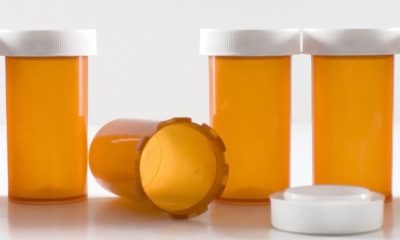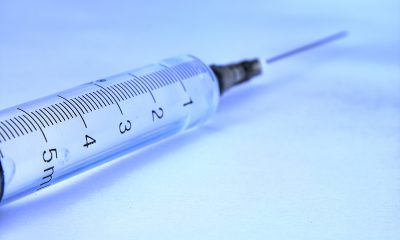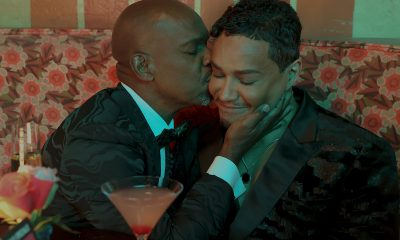Health
Learning the hard way
Local out black poz men band together to spread testing message
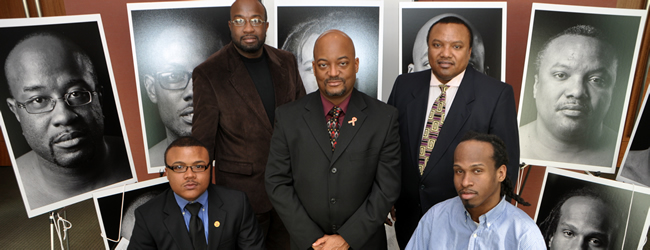

Seated from left are Venton Jones and Tori Smith. In back from left are Paul Gordon, Rodney McCoy Jr. and Samuel Hairston. (Blade photo by Michael Key)
The statistics are grim. The task is daunting.
In the D.C. area, of the estimated 16,500 people living with HIV/AIDS, 40 percent — or more than 6,700 people — who were infected with the virus were men having sex with men. The majority of these men — 60 percent, or nearly 4,100 — are black. Data, from 2010 suggests that of those, 40 percent were unaware of their HIV status before being tested.
Those scary statistics are constantly on the mind of Venton Jones, 27, who recently came to the nation’s capital from Texas where he was born and educated, earning a degree in community health and a master’s in health care administration.
But Jones’ real credentials about AIDS are different, giving him the “street cred” about HIV, credibility he wishes he never earned. In June 2007, Jones was diagnosed as HIV positive when he was going through a standard set of medical tests as he was seeking enlistment in the U.S. Army.
“It happened with someone I was sleeping with” that spring, says Jones, “at a time in my youth when I was wild, to say the least.”
He thought, “How could this happen to me?” He reviewed all he had going in his life: “I am educated; I have a degree in health; I should have known better.”
But Jones says, “there was a lot going on” in his life then, adding that he was dealing with “issues like coming out, and also what to do next” with his life, with what he calls “finding a purpose.” He says he “wasn’t necessarily on the ‘down-low,'” a term often used among black men to describe themselves as living life on the surface as “straight” but actually secretly having sex with men. He says a few of his friends already knew he was gay.
“If you asked me, I would tell you, but not too many people asked.”
In the spring of 2007 he came out to his parents.
Jones says he had regularly been tested and had always seen the results come back as negative for the virus. So he got cocky about it, basically feeling so-far-so-good. So he had unprotected sex. Now he knows better.
As a result, filling the giant vacuum of the “absence of strategies to reach young people, specially young black gay men, like the people I grew up with,” Jones says is his top priority today, as he gets ready to hit the streets to spread the message that testing for HIV is a crucial step to checkmate the renewed AIDS epidemic in the D.C. area.
On antiretroviral medication today, the virus in his body is, Jones says, “now undetectable,” and he says proudly that “now I am in the best physical and mental health I have been in my entire life.” But of course he knows the virus still lurks, waiting to pounce and begin to spread again, high-jacking other cells, especially white blood cells, eventually dooming his body’s immune system, if given the chance.
However Jones is doing more than fight HIV in his own body. He is now one of eight gay black men, all diagnosed as HIV positive, who are “HIV testing advocates” now finishing training under the auspices of the Bayard Rustin Mobilization Project, an outreach program aimed at raising HIV awareness among gay black males in D.C., funded by a grant from the federal government and directed by the national nonprofit advocacy group, the National Association of People With AIDS (NAPWA), in partnership with local groups like The D.C. Center for the LGBT Community.
Jones, who also works as a senior program associate in communications for the D.C.-based National Black Gay Men’s Advocacy Coalition, will tackle the role of being an advocate on his own time, away from his day job. And for that task, he says, “a big focus has been on reaching youth.
Jones has a lot in common with his fellow advocates. Like Samuel Hairston, a 44-year-old preacher with a passion for spreading the “good news,” ordained in 1996 as a full-time Pentecostal minister, currently living in D.C. but pastoring on weekends in Baltimore at the Church of the Everlasting Kingdom, with a congregation of about 50, he says, most of whom are not LGBT, and who all know that he is both gay and HIV positive.
Then a full-time Montgomery County firefighter, in 2005 Hairston learned he was positive when, he says, after years living life on the “down-low,” a “routine medical exam in his blood work prompted an HIV test, and I came up positive.”
He was “devastated,” he admits, not only for himself, but also because he had to go home and tell his “faithful and loving” wife that he had contracted HIV “and that I could possibly have infected her.” He says that “thankfully, that was not the case,” and she remains negative today. “The marriage was already on the rocks,” he says, and it did not survive. His children, then a 9-year-old son and a 6-year-old daughter, took their parents’ divorce hard, though they survived it, and they did not learn until later that their father was infected.
“As I child,” he says, “I always felt an attraction to men and other boys, but there was no one I could trust to talk to.” His introduction to sex came when he was molested at age 5. He learned “at an early age,” he confides, “to keep secrets and hide my feelings.”
Later he convinced himself that through his early ordination in the ministry, at first when he was 14, he “would change my homosexuality,” but by age 15, he says he was “jumping in and out of cars and finding ways to feed my sexual appetite,” which felt “insatiable” to him. He calls himself a recovering sex addict. And though he preached a Christian message, he says, “I never believed (God) really loved me because I was gay.”
As the marriage was cracking apart and with the diagnosis of AIDS, his world was falling in on him. “I went into a spiral of serious depression” and he says he wound up meeting a man, “the first man to give me some attention” of the type he sought. They had sex and did cocaine.
“Drugs became my outlet,” Hairston says, as he sought “some release from the guilt and shame of living in the closet and the ‘down-low’ lifestyle, and the pain it caused my family.”
“Today I live life out in the open,” he says. “I’ve left the ‘down-low’ behind, because it’s so dishonest. The truth is liberating, and even as Jesus said, ‘The truth shall set you free.'” Today, Hairston says, thanks to regular devotion to a 12-step program, he’s “clean” of drugs and “celebrating two-and-a-half years of sobriety.”
One of his biggest life missions now “is to reach out to African-American men, who are on the down low, and to say that there’s a better life, to help them to embrace honesty,” the same transparency he has come to himself. As for himself, he says he has “reconciled” his sexuality with his spirituality. His target audience will be among those attending the black church, which traditionally has fostered homophobia rather than acceptance.
Meanwhile, another advocate, Tyranny “Tori” Smith, 30, will focus his outreach efforts differently — to those who inhabit what he calls the “vogue-fem” subculture: gay and transgender men and women who stylize their lives with makeup, hairdos, costumes and dancing. This is the “sweet” world of “ballroom” culture, and the “houses of families formed by choice, not birth that grow up within the world of urban, predominantly black “ballroom,” or fashion runway, competitions.
Raised in Oxon Hill, Md., Smith came out at age 14 and soon was a regular at the clubs like Tracks.
“I told my mother,” he says, that he was gay, “and once I told her, there was no one else to hide it from.” Now a resident of NE D.C., Smith is a member of the “House of Herrera,” named for famed Venezuelan-born American fashion designer Carolina Herrera. It’s his second “house.” He joined his first when 16 but five years ago switched to Herrera, which currently has about six members in D.C. and around 300 nationwide, five years ago. “In my house,” he says, “they’re my family.”
Smith discovered he was positive in June 2010, when he came down with summer pneumonia and was tested positive when given an HIV exam.
“I was surprised,” he says, “because I had been with someone for three years, and we had both tested negative at the beginning.” But with the benefit of hindsight, it was his partner (who later died, though not of AIDS) who infected him.
Now as an advocate for regular testing, Smith says that “my whole purpose is to reach people, like in the ‘ballroom’ culture, that the Health Department is not reaching — that’s my audience. Basically, we’re trying to put a face to HIV, our face, that’s our whole mission. And when I talk to people, my motto is this: ‘knowing is to live, not knowing is to die.’ So basically I tell them, ‘get tested.'”
Two other Rustin Mobilization Project testing advocates are Paul Gordon, 40, born in Portsmouth, Va., and Rodney McCoy, Jr., 43, born in Brooklyn, N.Y. Both men now live in the D.C. area.
Gordon, who felt he was gay from age 5 on, was molested at age 14, raped at gunpoint and “with a knife at my neck” by someone he calls his father’s “best friend.” The assailant was eventually arrested and convicted and served eight years of a 20 year prison sentence. Gordon, who then began to have sex with boys his own age, came out when he was about 18. His HIV status was diagnosed positive in 1989, contracted from a partner, a decade older, with whom he moved to Atlanta at age 20 after graduating from Hampton University in coastal Virginia. Gordon never knew his partner, who eventually died after their three-eyar relationship, was positive
“I was just trusting,” he says.
When he learned he was infected, Gordon remembers that “I went to a place of denial. Regardless of what the doctor said, I didn’t believe it.”
McCoy, in the field of HIV prevention for 16 years and now an outreach advocate as well as a manager of the Mobilization Project program, was diagnosed HIV positive in 2002, when he was so weak with the flu that someone urged him to get tested.
“I really didn’t expect to be positive,” he says. “I had risky behaviors before but I had always tested negative. I felt I was just managing my risks well enough.” When dating one person, for only a month, the man insisted he was negative, and looking back, McCoy says, “To this day, I’m sure now that he didn’t tell me the truth.”
For McCoy, it comes down to this: “We often say ‘use condoms every time,’ but often we simply don’t acknowledge that love, trust and pleasure trump knowledge and information every time. And you can say this, I found out the hard way.”
“Self-determination” is the watchword of the Bayard Rustin project and its sponsoring organization, NAPWA, whose president Frank Oldham, Jr. says that “While the epidemic impacts us directly, we also impact the epidemic by identifying ways to reduce its new infections, mitigate its stigma and alleviate its suffering.”
It was NAPWA, which advocates for 1.3 million Americans living with AIDS, that created the annual event of National HIV Testing Day.
The Rustin project is simply one more step in the proverbial journey of a thousand miles, until the disease can be cured and even prevented. In the meantime, Oldham says, “we help individuals living with HIV learn how to tell their stories. We’re taking the fight to the streets,” with advocates who are HIV positive, one man reaching out to another man, one step at a time.
Monkeypox
US contributes more than $90 million to fight mpox outbreak in Africa
WHO and Africa CDC has declared a public health emergency
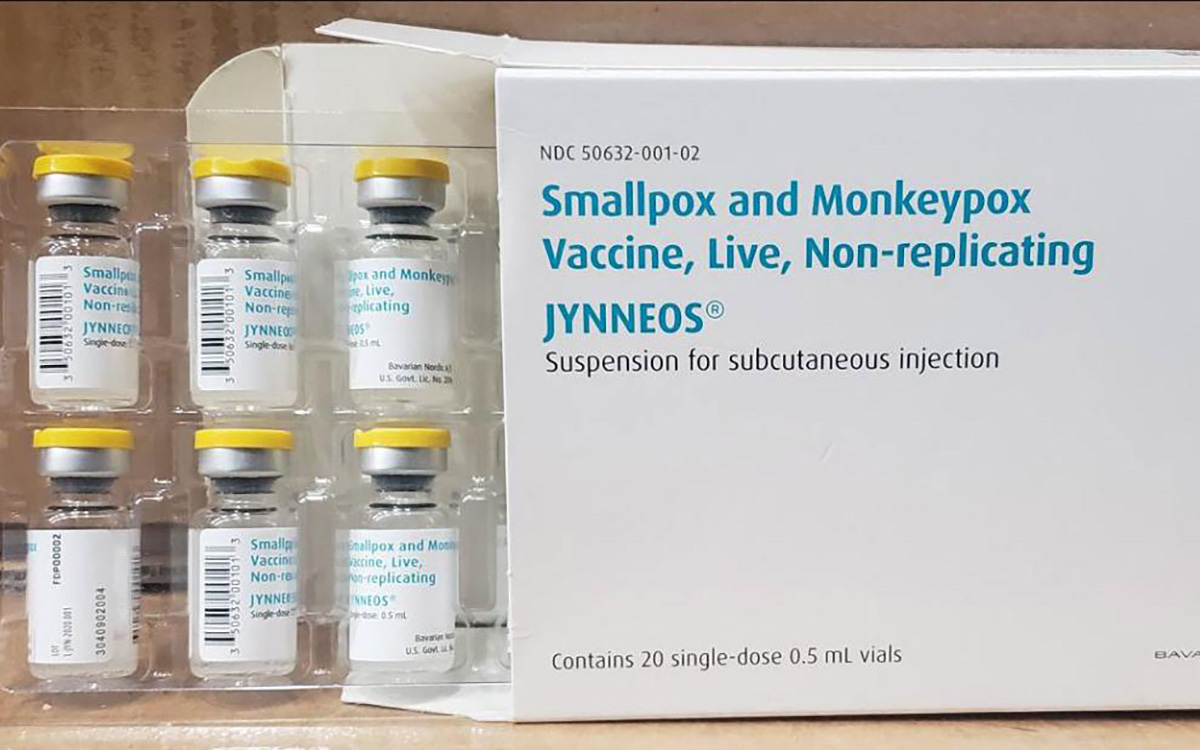
The U.S. has contributed more than $90 million to the fight against the mpox outbreak in Africa.
The U.S. Agency for International Development on Tuesday in a press release announced “up to an additional” $35 million “in emergency health assistance to bolster response efforts for the clade I mpox outbreak in Central and Eastern Africa, pending congressional notification.” The press release notes the Biden-Harris administration previously pledged more than $55 million to fight the outbreak in Congo and other African countries.
“The additional assistance announced today will enable USAID to continue working closely with affected countries, as well as regional and global health partners, to expand support and reduce the impact of this outbreak as it continues to evolve,” it reads. “USAID support includes assistance with surveillance, diagnostics, risk communication and community engagement, infection prevention and control, case management, and vaccination planning and coordination.”
The World Health Organization and the Africa Centers for Disease Control and Prevention last week declared the outbreak a public health emergency.
The Washington Blade last week reported there are more than 17,000 suspected mpox cases across in Congo, Uganda, Kenya, Rwanda, and other African countries. The outbreak has claimed more than 500 lives, mostly in Congo.
Health
Mpox outbreak in Africa declared global health emergency
ONE: 10 million vaccine doses needed on the continent

Medical facilities that provide treatment to gay and bisexual men in some East African countries are already collaborating with them to prevent the spread of a new wave of mpox cases after the World Health Organization on Wednesday declared a global health emergency.
The collaboration, both in Uganda and Kenya, comes amid WHO’s latest report released on Aug. 12, which reveals that nine out of every 10 reported mpox cases are men with sex as the most common cause of infection.
The global mpox outbreak report — based on data that national authorities collected between January 2022 and June of this year — notes 87,189 of the 90,410 reported cases were men. Ninety-six percent of whom were infected through sex.
Sexual contact as the leading mode of transmission accounted for 19,102 of 22,802 cases, followed by non-sexual person-to-person contact. Genital rash was the most common symptom, followed by fever and systemic rash.
The WHO report states the pattern of mpox virus transmission has persisted over the last six months, with 97 percent of new cases reporting sexual contact through oral, vaginal, or anal sex with infected people.
“Sexual transmission has been recorded in the Democratic Republic of Congo among sex workers and men who have sex with men,” the report reads. “Among cases exposed through sexual contact in the Democratic Republic of the Congo, some individuals present only with genital lesions, rather than the more typical extensive rash associated with the virus.”
The growing mpox cases, which are now more than 2,800 reported cases in at least 13 African countries that include Kenya, Uganda, Rwanda, and prompted the Africa Centers for Disease Control and Prevention this week to declare the disease a public health emergency for resource mobilization on the continent to tackle it.
“Africa has long been on the frontlines in the fight against infectious diseases, often with limited resources,” said Africa CDC Director General Jean Kaseya. “The battle against Mpox demands a global response. We need your support, expertise, and solidarity. The world cannot afford to turn a blind eye to this crisis.”
The disease has so far claimed more than 500 lives, mostly in Congo, even as the Africa CDC notes suspected mpox cases across the continent have surged past 17,000, compared to 7,146 cases in 2022 and 14,957 cases last year.
“This is just the tip of the iceberg when we consider the many weaknesses in surveillance, laboratory testing, and contact tracing,” Kaseya said.
WHO, led by Director General Tedros Adhanom Ghebreyesus, also followed the Africa CDC’s move by declaring the mpox outbreak a public health emergency of international concern.
The latest WHO report reveals that men, including those who identify as gay and bisexual, constitute most mpox cases in Kenya and Uganda. The two countries have recorded their first cases, and has put queer rights organizations and health care centers that treat the LGBTQ community on high alert.
The Uganda Minority Shelters Consortium, for example, confirmed to the Washington Blade that the collaboration with health service providers to prevent the spread of mpox among gay and bisexual men is “nascent and uneven.”
“While some community-led health service providers such as Ark Wellness Clinic, Children of the Sun Clinic, Ice Breakers Uganda Clinic, and Happy Family Youth Clinic, have demonstrated commendable efforts, widespread collaboration on mpox prevention remains a significant gap,” UMSC Coordinator John Grace stated. “This is particularly evident when compared to the response to the previous Red Eyes outbreak within the LGBT community.”
Grace noted that as of Wednesday, there were no known queer-friendly health service providers to offer mpox vaccinations to men who have sex with men. He called for health care centers to provide inclusive services and a more coordinated approach.
Although Grace pointed out the fear of discrimination — and particularly Uganda’s Anti-Homosexuality Act — remains a big barrier to mpox prevention through testing, vaccination, and treatment among queer people, he confirmed no mpox cases have been reported among the LGBTQ community.
Uganda so far has reported two mpox cases — refugees who had travelled from Congo.
“We are for the most part encouraging safer sex practices even after potential future vaccinations are conducted as it can also be spread through bodily fluids like saliva and sweat,” Grace said.
Grace also noted that raising awareness about mpox among the queer community and seeking treatment when infected remains a challenge due to the historical and ongoing homophobic stigma and that more comprehensive and reliable advocacy is needed. He said Grindr and other digital platforms have been crucial in raising awareness.
The declarations of mpox as a global health emergency have already attracted demand for global leaders to support African countries to swiftly obtain the necessary vaccines and diagnostics.
“History shows we must act quickly and decisively when a public health emergency strikes. The current Mpox outbreak in Africa is one such emergency,” said ONE Global Health Senior Policy Director Jenny Ottenhoff.
ONE is a global, nonpartisan organization that advocates for the investments needed to create economic opportunities and healthier lives in Africa.
Ottenhoff warned failure to support the African countries with medical supplies needed to tackle mpox would leave the continent defenseless against the virus.
To ensure that African countries are adequately supported, ONE wants governments and pharmaceutical companies to urgently increase the provision of mpox vaccines so that the most affected African countries have affordable access to them. It also notes 10 million vaccine doses are currently needed to control the mpox outbreak in Africa, yet the continent has only 200,000 doses.
The Blade has reached out to Ishtar MSM, a community-based healthcare center in Nairobi, Kenya, that offers to service to gay and bisexual men, about their response to the mpox outbreak.
Health
White House urged to expand PrEP coverage for injectable form
HIV/AIDS service organizations made call on Wednesday
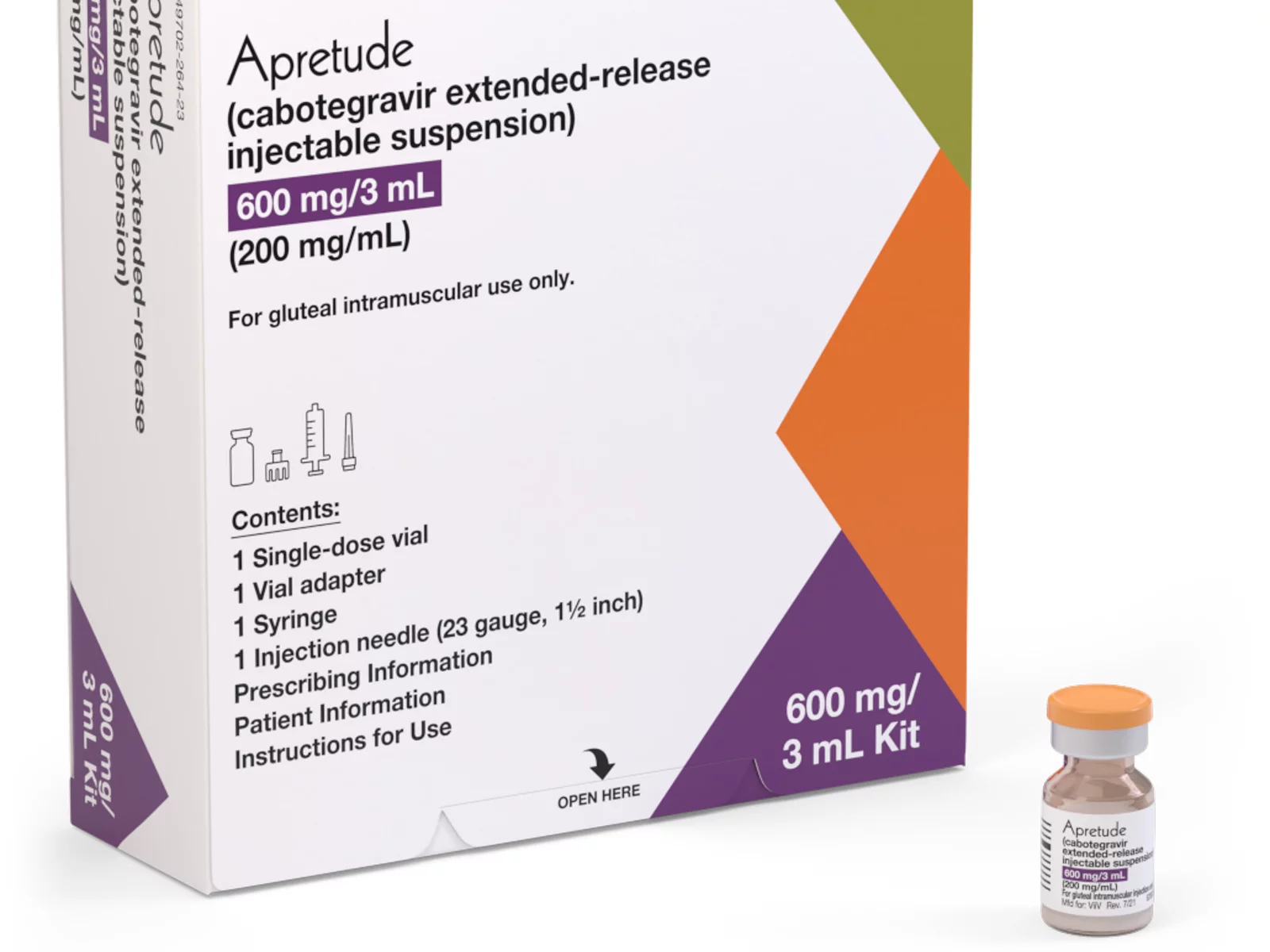
A coalition of 63 organizations dedicated to ending HIV called on the Biden-Harris administration on Wednesday to require insurers to cover long-acting pre-exposure prophylaxis (PrEP) without cost-sharing.
In a letter to Chiquita Brooks-LaSure, administrator of the Centers for Medicare and Medicaid Services, the groups emphasized the need for broad and equitable access to PrEP free of insurance barriers.
Long-acting PrEP is an injectable form of PrEP that’s effective over a long period of time. The FDA approved Apretude (cabotegravir extended-release injectable suspension) as the first and only long-acting injectable PrEP in late 2021. It’s intended for adults and adolescents weighing at least 77 lbs. who are at risk for HIV through sex.
The U.S. Preventive Services Task Force updated its recommendation for PrEP on Aug. 22, 2023, to include new medications such as the first long-acting PrEP drug. The coalition wants CMS to issue guidance requiring insurers to cover all forms of PrEP, including current and future FDA-approved drugs.
“Long-acting PrEP can be the answer to low PrEP uptake, particularly in communities not using PrEP today,” said Carl Schmid, executive director of the HIV+Hepatitis Policy Institute. “The Biden administration has an opportunity to ensure that people with private insurance can access PrEP now and into the future, free of any cost-sharing, with properly worded guidance to insurers.”
Currently, only 36 percent of those who could benefit from PrEP are using it. Significant disparities exist among racial and ethnic groups. Black people constitute 39 percent of new HIV diagnoses but only 14 percent of PrEP users, while Latinos represent 31 percent of new diagnoses but only 18 percent of PrEP users. In contrast, white people represent 24 percent of HIV diagnoses but 64 percent of PrEP users.
The groups also want CMS to prohibit insurers from employing prior authorization for PrEP, citing it as a significant barrier to access. Several states, including New York and California, already prohibit prior authorization for PrEP.
Modeling conducted for HIV+Hep, based on clinical trials of a once every 2-month injection, suggests that 87 percent more HIV cases would be averted compared to daily oral PrEP, with $4.25 billion in averted healthcare costs over 10 years.
Despite guidance issued to insurers in July 2021, PrEP users continue to report being charged cost-sharing for both the drug and ancillary services. A recent review of claims data found that 36 percent of PrEP users were charged for their drugs, and even 31 percent of those using generic PrEP faced cost-sharing.
The coalition’s letter follows a more detailed communication sent by HIV+Hepatitis Policy Institute to the Biden administration on July 2.
Signatories to the community letter include Advocates for Youth, AIDS United, Equality California, Fenway Health, Human Rights Campaign, and the National Coalition of STD Directors, among others.

